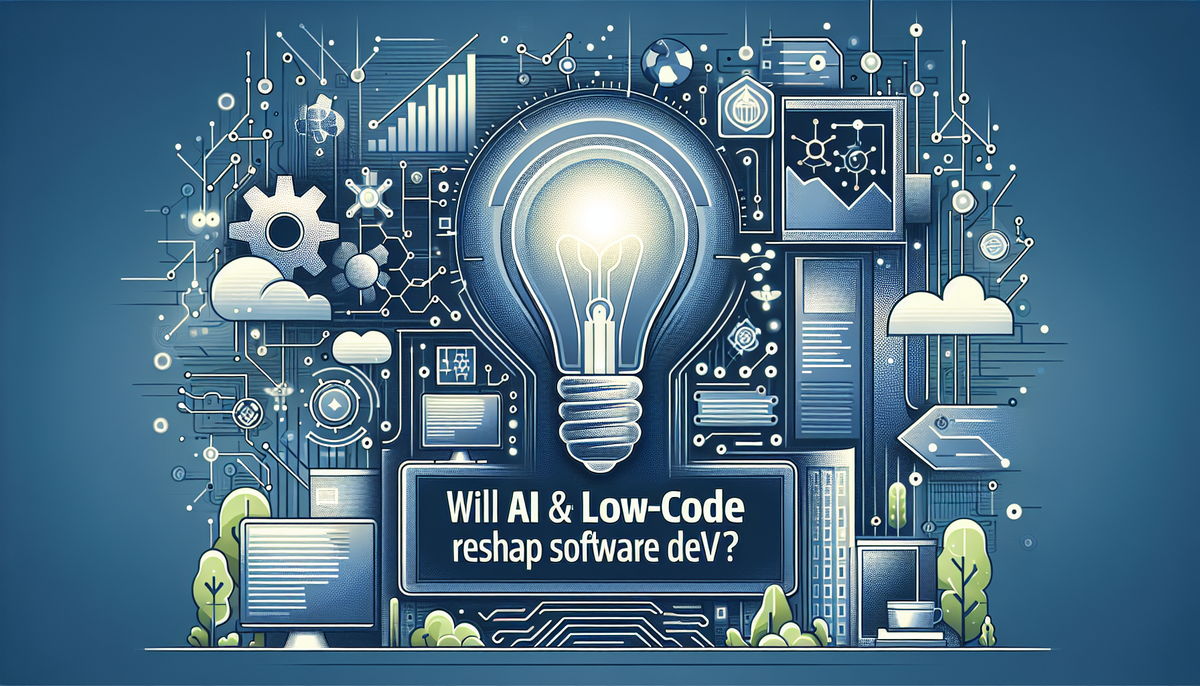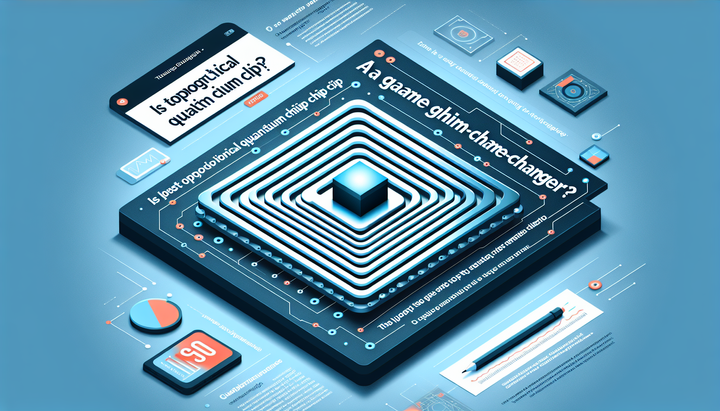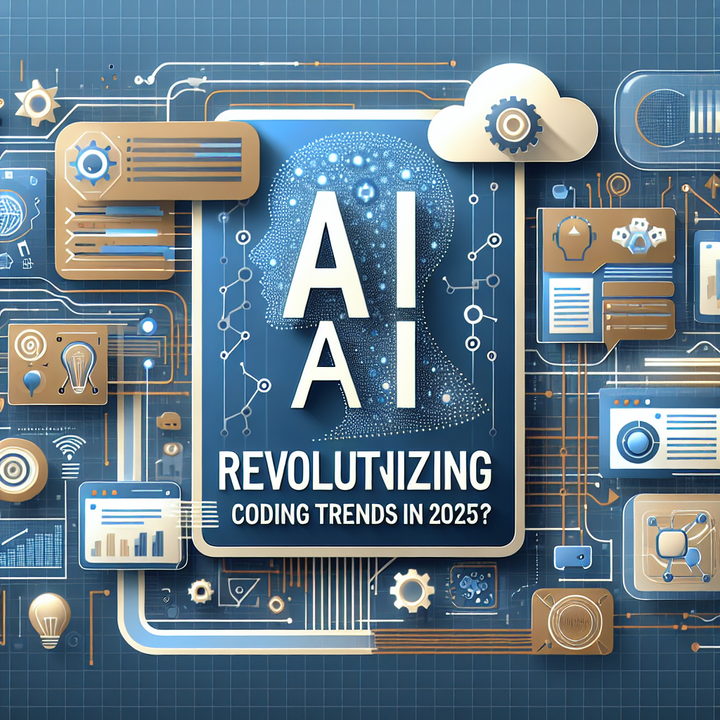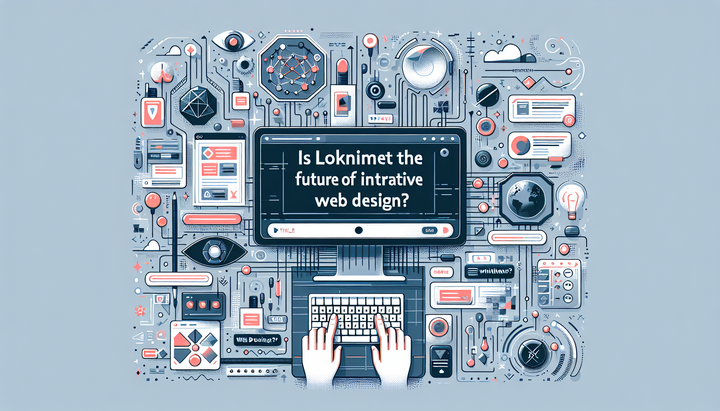Will AI & Low-Code Reshape Software Dev in 2025?

Introduction: Navigating the Future of Software Development
The software development landscape is evolving at a breakneck pace, driven by emerging technologies and innovative trends that challenge traditional coding paradigms. In 2025, developers are experiencing a paradigm shift with the rise of AI-driven programming, low-code and no-code platforms, and cutting-edge frameworks designed to streamline workflows. This article offers an in-depth look at the latest programming trends, highlights the benefits and challenges of adopting new tools, and provides actionable insights to help developers and tech professionals stay ahead in an ever-changing industry.
AI-Driven Coding: Revolutionizing the Developer Experience
Artificial intelligence is no longer a futuristic concept reserved for large-scale enterprises; it has permeated the everyday workflow of developers. AI-driven coding assistants and integrated development environments (IDEs) now offer predictive code suggestions, automated debugging, and performance optimization. Key benefits of integrating AI in coding include:
- Enhanced Productivity: Developers can write cleaner and more efficient code with real-time assistance and error detection.
- Faster Learning Curves: Novice programmers leverage intelligent code recommendations to learn new frameworks and languages faster.
- Cost Efficiency: Automation in testing and maintenance reduces both time investment and development costs.
However, as AI tools become more advanced, questions arise regarding the future role of the human developer. While machines excel at handling repetitive tasks, creativity and strategic decision-making remain human strengths. Balancing automation with human insight will be key in harnessing the full potential of AI-driven development environments.
Emerging Programming Languages and Frameworks
In addition to AI, the surge of new programming languages and frameworks is transforming the landscape. Languages such as Rust, Go, and TypeScript have gained traction due to their performance, safety features, and modern design principles. Meanwhile, innovative frameworks are streamlining product development by offering modular and scalable architectures. Some noteworthy trends include:
- Rust for System-Level Programming: Emphasizing safety and concurrency, Rust is increasingly preferred in building reliable system software.
- TypeScript in Web Development: As web applications grow more complex, TypeScript provides a robust layer to JavaScript with its type-checking capabilities.
- Go for Concurrent Applications: Ideal for cloud computing infrastructures, Go simplifies the design of scalable systems.
These languages and frameworks not only improve efficiency but also address developers' concerns about maintainability and security in a fast-paced digital world.
The Rise of Low-Code and No-Code Platforms
One of the most transformative trends in software development is the proliferation of low-code and no-code platforms. Designed to empower individuals with little to no programming experience, these platforms democratize software creation and enable rapid prototyping. The benefits are numerous:
- Accelerated Development Cycles: With drag-and-drop interfaces and pre-built modules, companies can build applications in a fraction of the time.
- Cost Reduction: Reduced dependency on specialized coding skills can significantly cut development budgets.
- Agility and Flexibility: Businesses can iterate quickly, adapting their software solutions to market needs without extensive rework.
Despite the enthusiasm, professional developers voice concerns about the potential pitfalls of low-code environments, such as limited customization and possible security vulnerabilities. Organizations embracing these tools must weigh the convenience of rapid development against the need for robust, tailored solutions in more complex scenarios.
Integrating AI with Traditional Development Practices
While AI and low-code platforms are revolutionizing software development, the integration of these innovative tools with traditional programming methodologies remains paramount. Organizations that successfully merge these approaches can achieve a balanced ecosystem where human expertise complements automated capabilities. Consider the following strategies:
- Hybrid Models: Combining manual coding with AI-powered tools ensures that critical thinking and creativity continue to drive development, while repetitive and mundane tasks are automated.
- Continuous Learning: Developers should invest in training programs to familiarize themselves with emerging AI tools, thus maintaining their competitive edge.
- Security Measures: With automation comes the risk of new vulnerabilities. Proactive security protocols are necessary to safeguard code in an AI-driven environment.
This integration creates an agile workflow where technological advancements and developer ingenuity work in tandem, ultimately fostering innovation while maintaining high standards of cybersecurity and efficiency.
Addressing Developer Challenges in the Modern Era
Adopting new programming trends is not without its challenges. Developers must navigate issues such as skill gaps, interoperability between legacy systems and modern tools, and the constant pressure of keeping pace with rapid technological advancements. Common challenges include:
- Skill Diversification: As technologies evolve, developers must continuously upskill to remain relevant. The demand for expertise in both traditional and new programming paradigms is higher than ever.
- Legacy System Integration: Updating or interfacing modern frameworks with legacy systems poses technical and financial challenges that require careful strategizing.
- Security Concerns: With the incorporation of AI and low-code tools come new security vulnerabilities that call for robust and proactive countermeasures.
To mitigate these challenges, industry experts recommend a combination of ongoing education, cross-disciplinary collaboration, and the adoption of flexible, modular system architectures. Developers are encouraged to participate in community-led projects, attend workshops, and engage with online resources to remain adaptive in this fast-moving landscape.
Case Studies: Success Stories and Lessons Learned
Many organizations have already begun to reap the benefits of these emerging trends. By examining real-world examples, developers can gain valuable insights into practical applications and strategic implementations:
- Startup Innovations: Several startups have successfully integrated low-code platforms into their development pipelines, resulting in time-to-market reductions of up to 70%.
- Enterprise Transformation: Large enterprises have utilized AI-driven coding assistants to refactor legacy systems, significantly boosting productivity and reducing bug incidences.
- Government Initiatives: Public sector projects leveraging AI and enhanced coding frameworks have improved the delivery of digital services, demonstrating that even traditionally risk-averse sectors can benefit from innovative tools.
These case studies illustrate that whether you are part of a nimble startup or a massive corporation, the adoption of innovative technology in software development is not just a trend—it is a strategic imperative.
Expert Predictions and the Road Ahead
Looking forward, industry experts predict that the fusion of AI, low-code/no-code platforms, and emerging programming languages will not only continue to build momentum but also redefine the way we conceptualize software development. Some exciting predictions include:
- The rise of "AI-First Development" where coding tools are designed with AI capabilities as their core features.
- Greater emphasis on cybersecurity, with AI playing a central role in detecting and mitigating threats in real time.
- The democratization of coding, where non-traditional backgrounds thrive thanks to user-friendly development platforms.
These trends point toward a future where maintaining a competitive edge will depend on embracing change and fostering a culture of innovation. Developers, educators, and decision-makers alike must prepare to navigate this transformative period by investing in new skills, adopting holistic development practices, and remaining agile in an era defined by rapid technological evolution.
Conclusion: Embracing the Change in Software Development
In conclusion, the emergence of AI-driven coding, advanced frameworks, and low-code/no-code platforms heralds a new era in software development. The current trends are reshaping not only the technical aspects of coding but also the underlying business models and operational strategies. As developers continue to confront challenges such as skill gaps and integration hurdles, the imperative to innovate and adapt becomes ever clearer.
The future of coding in 2025 is bright, with intelligent tools and simplified development platforms paving the way for a more efficient, agile, and inclusive digital world. Whether you are a veteran programmer or just starting your career, staying informed about these trends and proactively enhancing your skillset will be crucial in thriving in this dynamic environment.
This comprehensive overview provides a roadmap for navigating the exciting yet challenging terrain of modern software development. By understanding and leveraging these emerging trends, developers can ensure they are not only keeping pace with technological evolution but also actively shaping the future of coding.
As we look ahead, one thing is clear: the convergence of AI innovation, versatile programming languages, and intuitive development platforms is set to redefine our digital future. The questions remain—are you ready to embrace the change?



Comments ()